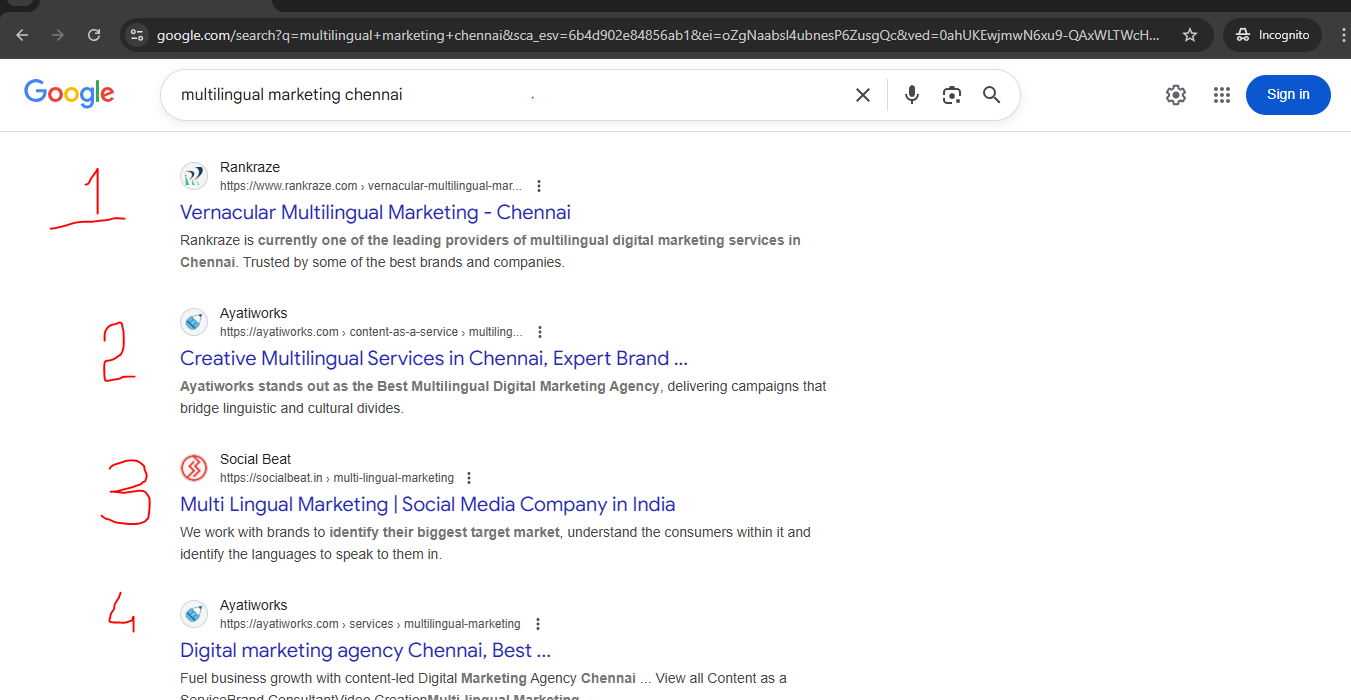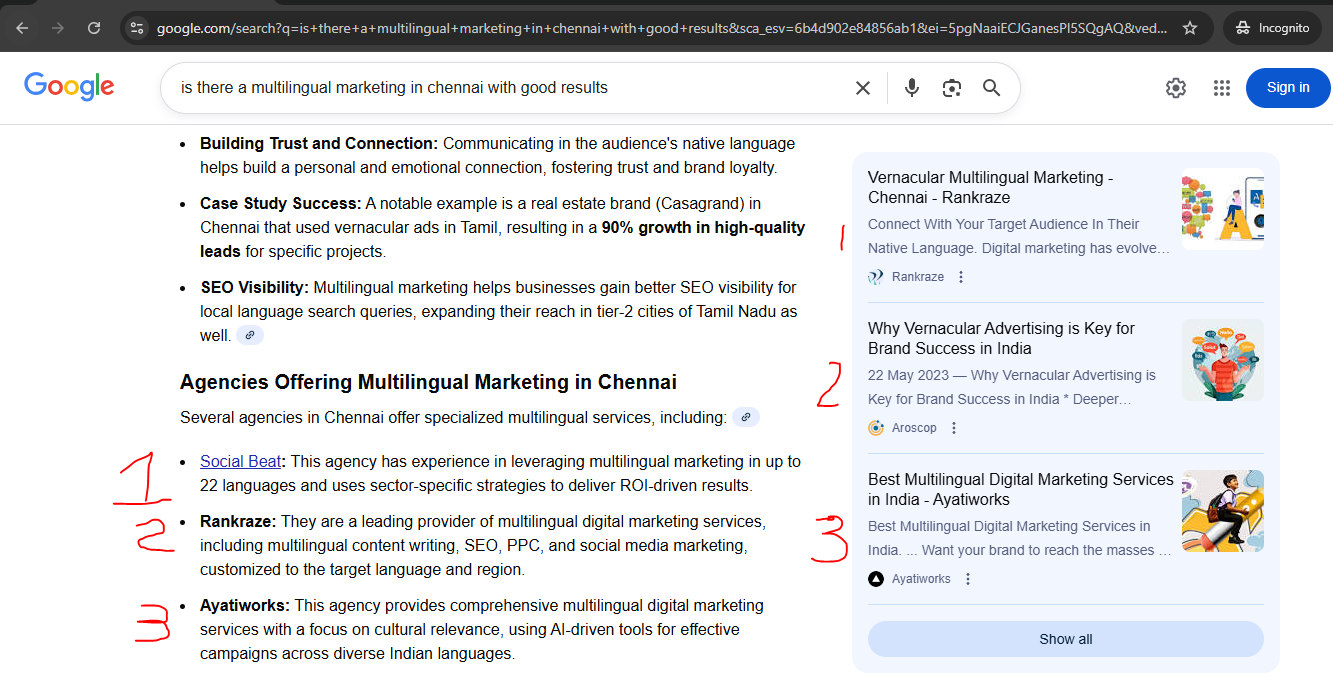How does this sound?
Answer Engine Optimization (AEO) isn’t the next big thing, it’s the now thing. As AI Overviews and conversational search take center stage, startups that master AEO today are the ones that will stay visible tomorrow.
In our earlier blog, we broke downhow tech startups can use AEO to attract and convert smarter audiences.
Now, let’s go one step further, and see how you can actually apply it inside your content strategy.
This framework will walk you through 7 actionable steps, from defining your AEO-ready content blueprint to tracking your “answer visibility” performance.
Step 1: Start by Redefining Your Keyword Universe
Traditional keyword research is about what people type.
AEO keyword strategy focuses on what people ask.
Start by mapping out your industry’s most frequently asked questions (FAQs, how-tos, definitions, and comparisons).
Tools like AlsoAsked, AnswerThePublic, and Google’s People Also Ask help you uncover the intent-based questions your audience is voicing.
But don’t stop there, cluster these questions by intent (informational, navigational, transactional). This forms the base of your Answer Graph, the digital map of what your audience seeks from your startup.
Tip: When you’re building your AEO keyword list, keep your brand’s SEO foundation strong. AEO doesn’t replace SEO; it enhances it. You can explore our detailed breakdown of SEO services at Ayatiworks to understand how both work hand in hand.
Step 2: Structure Your Content Like an Answer
What is the difference between ranking and being featured?
We refer to that as the Structure of AEO.
Ranking is a traditional success model of SEO where Search Engines ranked business on the 1st page of SERP.

That’s the Structure
When the end user types a keyword in the search bar of the Search Engine, in the above image the keyword being “multilingual marketing Chennai” Google pulls up 3 businesses in the page ranking
Rank 1 – Goes to - Rankraze
Rank 2 – Goes to - Ayatiworks
Rank 3 – Goes to - Social Beat
Rank 4 – Goes to - Ayatiworks
Even now for some keywords Google does rank pages of businesses on the Search Engine Ranking Pages.
Every business can look at this as an opportunity to browse Q&A’s around this search term, to come up with FAQ’s, get the structure correct to rank for the same keyphrase on AEO.
Being Featured or Featured Snippet is when the search engine provides direct answers to an end user who has entered a key term or phrase seeking information, by triggering a specialized response format i.e. the Answer Format referring your business as one of the best options.
Just like in the image below, look at the question asked in the search bar and the response with options of 3 businesses.

Rank 1 – Goes to - Social Beat
Rank 2 – Goes to - Rankraze
Rank 3 – Goes to - Ayatiworks
AI systems and Answer engines prefer content that is well-defined, snippet-friendly, and hierarchy-driven.
Here’s how to AEO-proof your content layout:
- Use question-based H2s and H3s.
- Keep direct answers (40–60 words) immediately below the header.
- Add supporting context (stats, examples, or data) to build authority.
When you answer a query with clarity, you’re signaling to AI engines, this content is ready to be cited
Example: In a Tech Business - Instead of “Benefits of Cloud Hosting,” write “Why is Cloud Hosting Essential for SaaS Startups?” and follow it up with a crisp, fact-based answer.
This structured approach also aligns perfectly with AEO strategies for 2025, especially as Google and OpenAI refine how AI Overviews source responses.
Step 3: Create Topic Clusters Around ‘Answer Themes’
Think of AEO like building your own Wikipedia, where every page connects intelligently.
Start by identifying 3–5 core answer themes relevant to your startup.
For instance:
- For a SaaS startup: “AI integrations,” “data security,” “API scalability.”
- For a FinTech app: “payment security,” “credit analytics,” “AI in lending.”
Each theme becomes a pillar blog, supported by answer-based subtopics (clusters).
Example: Pillar Topic: AEO for SaaS Startups
Cluster Topics: “Best AEO tools for SaaS founders,” “How AEO impacts API documentation visibility,” “AEO vs. SEO for technical content.”
This method ensures your content ecosystem mirrors user intent while reinforcing your brand authority across interlinked themes.
Smart move: Internal linking isn’t just for navigation, it’s for context passing. When your content ecosystem interlinks naturally, AI crawlers understand your site’s topical relevance better.
Step 4: Optimize for Featured Snippets and AI Overviews
AEO thrives where traditional SEO peaks, at the featured snippet zone.
If your content consistently lands in snippets, you’re already halfway into AEO territory.
Here’s how to take it further:
- Target question-style long-tail keywords.
- Provide concise, fact-based answers within 50–70 words.
- Use definition-style phrasing (“X is…”, “Y means…”) for concept queries.
- Include data tables, lists, and comparisons; these formats are snippet gold.
Google’s AI Overviews now rely on these structured content patterns to summarise results for voice and chat-based searches. So, when your startup content is snippet-optimized, you’re not just ranking; you’re getting referenced.
Pro Tip: Keep a mix of evergreen Q&As (like “What is AEO?”) and emerging intent questions (like “How does AEO help startups in 2025?”). This ensures your content stays relevant to both existing and evolving AI answer sets.
Step 5: Add Schema Markup - Your AI Translator
Schema is your content’s passport into the AI universe.
While humans read words, AI reads structure, and schema markup gives it exactly that.
For tech startups, these schema types are essential:
- FAQ Schema: Helps voice assistants fetch direct answers.
- How To Schema: Works great for step-based tutorials or implementation guides.
- Product Schema: For SaaS features or app-based solutions.
- Article Schema: To define the content’s intent and author expertise.
Implementing schema manually (via JSON-LD) or through a plugin (like Rank Math or Yoast) ensures that your content is not only visible to AI crawlers but also interpretable.
Quick Tip: Keep your schema markup validated using Google’s Rich Results Test. Clean data improves your eligibility for AI Overview inclusion and voice search snippets.
Step 6: Make Your Content Conversationally Discoverable
AEO doesn’t just optimize for search engines, it prepares your content to be spoken out loud.
By implementing Answer Engine Optimization, they restructured their blogs with question-led H2s, added FAQ schemas, and rewrote sections into concise, conversational summaries.
With tools like ChatGPT, Perplexity, Claude and Gemini shaping how audiences discover and trust information, your content must sound human, natural, and authoritative.
Here’s how to make your startup content conversationally discoverable:
- Write in Q&A pairs (simulate real user dialogue).
- Use “you” and “your startup” to personalize.
- Keep sentences crisp, 15–20 words max.
- Integrate contextual transitions (“So what does this mean for your brand?”).
You’re not writing for algorithms, you’re writing with them.
That’s the secret to creating AEO-ready content that reads smoothly in chat-based summaries and voice results.
The takeaway:
Are you wondering how AEO fits into your content marketing strategy?
It’s simpler than you think; it’s about answering before being asked.
Step 7: Track, Test, and Tune Your ‘Answer Visibility’
You can’t improve what you don’t measure, and AEO performance goes beyond keyword rankings.
Here’s what to monitor:
- Featured snippet appearances (track via tools like Semrush or Ahrefs).
- Voice search impressions (via Google Search Console queries with “how,” “why,” “what”).
- AI Overview mentions (manual tracking + brand name visibility).
- Click-through rate (CTR) for answer-based queries.
- Engagement metrics: Average time on page, bounce rate, and scroll depth.
The goal?
To move from “I rank” to “I’m referenced.”
Review your data every 30 days and adjust content tone, structure, or schema accordingly. AEO is not a one-time setup, it’s a feedback loop where your content learns as AI systems evolve.
Insight: Early adopters who consistently refine based on AI visibility data are seeing up to 35% improvement in snippet inclusion rates within six months.
Build Your Startup’s AI Visibility. One Answer at a Time
AEO isn’t replacing SEO; it’s evolving it.
And for tech startups, it’s the smartest bridge between being searchable and being discoverable.
Start with one step at a time:
- 1. Redefine your keyword universe.
- 2. Structure content for answers.
- 3. Cluster intelligently.
- 4. Optimize and measure relentlessly.
And remember, the ultimate goal isn’t just to appear on search results. It’s to be the answer AI chooses to quote.
Ready to build your startup’s AI-ready SEO foundation?
Frequently Asked Questions (FAQs)
Traditional SEO focuses on ranking your website for keywords typed into search engines. AEO (Answer Engine Optimization) goes a step further - it optimizes your content so that AI-driven systems and voice assistants (like ChatGPT, Gemini, or Siri) can identify, quote, and recommend your answers directly. In short, SEO gets you found, AEO gets you featured and referred.
With the rise of AI Overviews and conversational search, users no longer browse - they expect instant, credible answers. Startups using AEO stand a higher chance of appearing in these AI-generated summaries, improving brand trust, visibility, and lead conversion even before the user visits the website.
You can integrate AEO by mapping question-based keywords, structuring content for snippet-friendly answers, and adding schema markup. Analyze your user personas and buyer journey to understand what questions your audience asks. Then, provide straightforward and useful answers that satisfy their intent - this helps search and AI systems feature your brand in relevant contexts.
Content that directly answers user questions performs best - think FAQs, how-to guides, comparison blogs, product explainers, and educational articles. Each should follow a 'question → crisp answer → context' pattern, making it easier for AI systems to extract and showcase your response.
Most startups begin to notice measurable improvements - such as increased snippet visibility or AI Overview mentions - within 3 to 6 months. However, results vary depending on factors like content quality, schema accuracy, and publishing consistency. In some cases, optimized content can appear in AI results just days after being indexed.



